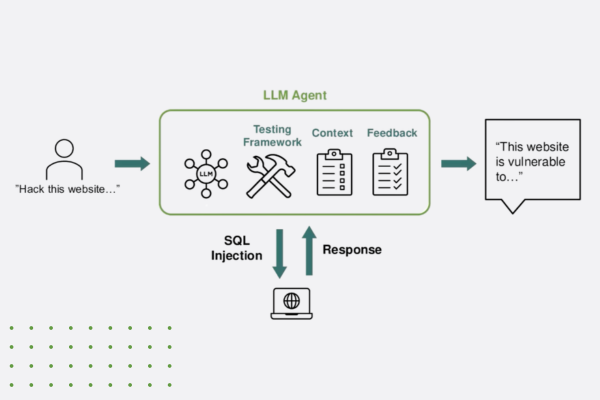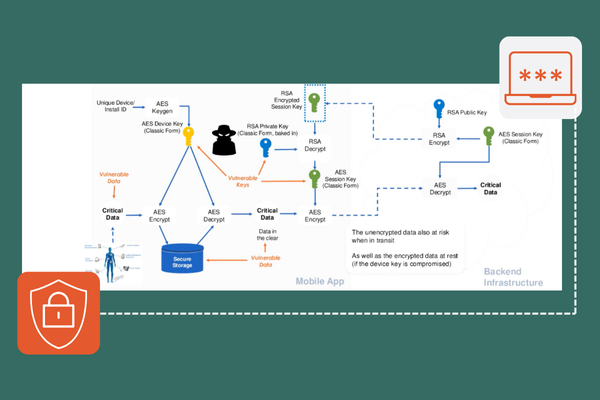Table of Contents
Related Blogs
Real-Time Threat Detection
Today, more and more functionality “lives” on the client-side applications. Perhaps most obviously in the apps that run on our phones. Safeguarding client-side applications from malicious attacks is as critical as ever. One of the most effective strategies to enhance security is through Real-time Threat Detection, a core component of Runtime Application Self Protection (RASP). Unlike traditional security measures that operate outside the application, RASP integrates directly into the application’s code during the development process, often as part of a DevSecOps pipeline. This built-in approach ensures that the application can monitor its behavior and the environment it runs in, identifying and responding to threats in real time. By embedding threat detection capabilities within the app itself, enterprises can proactively defend against attacks, ensuring that the application remains protected even when deployed in unsafe environments – and on a mobile phone, in the wild, outside of the security perimeter is about as unsafe an environment as we are going to find.
Contextual Understanding of Application Behavior
A critical aspect of Runtime Application Self Protection (RASP) is its ability to maintain a contextual understanding of application behavior. Unlike static security measures that rely solely on predefined rules, RASP solutions can analyze and understand the normal behavior patterns of an application in real time. This contextual awareness enables the application to distinguish between legitimate and potentially malicious activities. For example, RASP can identify when an application is being manipulated unexpectedly, such as unauthorized access attempts, unusual data requests, or attempts to alter the code during runtime. By understanding the context in which actions occur, RASP can accurately determine whether a particular behavior is part of regular operation or a potential security threat. This nuanced approach ensures the application protects itself against known threats and adapts to emerging threats by learning and responding to new attack patterns. The ability to monitor and react to the unique conditions under which an application operates provides a valuable layer of defense, making it significantly harder for attackers to exploit your applications and turn them into threat vectors.
Attack Prevention and Response
Another essential Runtime Application Self Protection (RASP) capability is Attack Prevention and Response. Unlike traditional security solutions that primarily focus on detecting attacks after they occur, RASP proactively prevents them by continuously monitoring the application’s environment and behavior. This proactive approach allows RASP to identify potential threats and take immediate action to neutralize them before any damage can be done. For instance, if the RASP system detects an attempt to inject malicious code or a suspicious pattern of access requests, it can block the action, terminate the application, and/or alert administrators in real time. Additionally, RASP’s response mechanisms are not limited to predefined rules; they can adapt to novel attack vectors by leveraging machine learning and behavioral analysis. This adaptability ensures that even zero-day exploits and other sophisticated attacks can be mitigated. The ability to instantly respond to threats helps maintain the integrity and security of the application, protecting sensitive data and ensuring continuity of service. Furthermore, RASP can provide detailed logging and reporting on attack attempts, enabling security teams to understand the nature of threats and improve the organization’s overall security posture. Digital.ai RASP, for example, utilizes App Aware, our Threat Analytics system, to monitor and log attacks.
Key Features of RASP Solutions
A standout feature of Runtime Application Self Protection (RASP) is its capability to implement **evasive measures** when faced with potential threats. These measures go beyond passive detection, allowing the application to defend itself actively. One of the most decisive actions RASP can take is to **shut down the application altogether** if it detects an environment that poses a significant risk. This drastic measure ensures that any malicious activity is halted immediately, preventing further damage or data leakage. However, RASP is also flexible enough to offer less severe responses. For instance, developers can program the RASP system to **take custom actions** tailored to specific threats. These actions could include disabling certain features, restricting access to sensitive data, or logging the user out of the session. Additionally, RASP can enhance security by **forcing step-up authentication**. This means requiring the user to verify their identity through additional authentication methods, such as biometric verification or a one-time passcode before they can proceed. This capability is handy in scenarios where unusual behavior is detected, ensuring the attacker cannot gain further access without proving their identity, even if an attack is underway. By offering a range of evasive measures, RASP provides a robust and adaptable defense mechanism, empowering developers to secure their applications dynamically and contextually.
Challenges and Considerations
Performance Overhead
While the benefits of Runtime Application Self Protection (RASP) are substantial, it is important to address concerns about the performance overhead associated with its implementation. Integrating RASP into an application inevitably introduces additional processing requirements as it continuously monitors and analyzes the application’s behavior and environment in real time. However, modern RASP solutions are designed to minimize this overhead to ensure the application’s performance remains largely unaffected. By employing efficient algorithms and leveraging lightweight monitoring techniques, RASP can operate unobtrusively, providing robust security without compromising user experience. Additionally, developers can fine-tune the sensitivity and scope of RASP’s monitoring capabilities to balance security and performance according to their specific needs. For instance, critical parts of the application can be more rigorously protected, while less sensitive components may require less intensive monitoring. This flexibility allows enterprises to adopt RASP without significant degradation in application responsiveness or speed, ensuring that security enhancements do not come at the cost of performance.
Integration with Existing Security Tools
An essential advantage of Runtime Application Self Protection (RASP) is its ability to integrate seamlessly with existing security tools, enhancing the overall security ecosystem of an organization. RASP can work in conjunction with other security measures such as Web Application Firewalls (WAFs), Intrusion Detection Systems (IDS), and Security Information and Event Management (SIEM) systems. This integration allows for a comprehensive, layered defense strategy where RASP acts as an additional protective layer within the application itself, complementing perimeter and network security solutions. By sending real-time alerts and detailed reports on suspicious activities and potential threats to a centralized SIEM system, RASP enables security teams to have a unified view of the security landscape. This collaboration between RASP and other security tools improves threat detection and response times and allows for better correlation and analysis of security events. Furthermore, RASP can enhance the effectiveness of automated incident response processes by providing actionable insights and context-specific data. Though most RASP tools (including those offered by Digital.ai) can be run in a stand-alone environment, by integrating RASP with the broader security infrastructure, organizations can achieve a more resilient and cohesive defense mechanism, ensuring robust protection against evolving threats.
Customization and Tuning Requirements
One of the significant advantages of Runtime Application Self Protection (RASP) is its ability to be customized and tuned to meet the specific security needs of an application. Unlike one-size-fits-all security solutions, RASP allows developers to configure their settings to align with their applications’ unique characteristics and threat landscape. This customization can involve adjusting the sensitivity of threat detection mechanisms, specifying which parts of the application require more rigorous protection, and defining custom responses to various threats. For example, a financial application might require stringent monitoring and immediate shutdown capabilities for suspicious activities, while a less sensitive application might prioritize performance with more lenient security checks. Additionally, RASP solutions often provide dashboards and reporting tools that enable security teams to analyze the effectiveness of the protection measures and make data-driven adjustments as needed. This level of customization ensures that RASP can deliver robust security without imposing unnecessary performance overhead, allowing enterprises to achieve an optimal balance between security and efficiency. The flexibility to tailor RASP to specific requirements makes it an invaluable tool for maintaining high-security standards in diverse and dynamic application environments.
RASP Use Cases
Here are a few use cases for Runtime Application Self Protection (RASP):
- Financial Services Application: Protecting sensitive financial data and transactions from fraud and cyberattacks.
- Healthcare Applications: Ensuring the security of patient data and compliance with regulations such as HIPAA.
- E-commerce Applications: Safeguarding customer information and payment details from theft and unauthorized access.
- Gaming Applications: On both mobile and desktop apps, RASP can help prevent cheating and piracy by detecting and responding to unauthorized modifications and hacks.
- Educational Technology: Safeguarding student data and ensuring the integrity of online learning platforms.
- Retail and Point-of-Sale Systems: Ensuring the security of transaction data and preventing point-of-sale malware attacks.
Summary of Key Points
Runtime Application Self Protection (RASP) is a cutting-edge security solution designed to provide real-time threat detection and protection by integrating directly into the application’s code during development. This integration allows RASP to monitor the application’s behavior and environment, ensuring proactive defense against malicious activities. RASP’s contextual understanding of application behavior enables it to distinguish between legitimate and suspicious activities. In contrast, its ability to take evasive measures, such as shutting down the application, executing custom actions, or enforcing step-up authentication, ensures robust protection. Despite concerns about performance overhead, modern RASP solutions are optimized to minimize impact and maintain application performance. Furthermore, RASP can seamlessly integrate with existing security tools, enhancing the overall security posture. Customization and tuning capabilities allow RASP to be tailored to specific application needs, striking an optimal balance between security and efficiency. These features make RASP an indispensable tool for protecting applications in diverse environments, from financial services and healthcare apps to gaming apps.
USe RASP to Deepen SevSecOps
Explore
What's New In The World of Digital.ai
“Think Like a Hacker” Webinar Recap: How AI is Reshaping App Security
Discover how generative AI is reshaping app security—empowering both developers and hackers. Learn key strategies to defend against AI-powered threats.
The Encryption Mandate: A Deep Dive into Securing Data in 2025
Discover how white-box cryptography and advanced encryption help enterprises secure sensitive data, meet compliance, and stay ahead of cybersecurity threats.
Better Together: Unlocking Endless Possibilities For Our Customers
This Valentine’s Day, join us in celebrating the unique stories that make our Digital.ai customers special!




